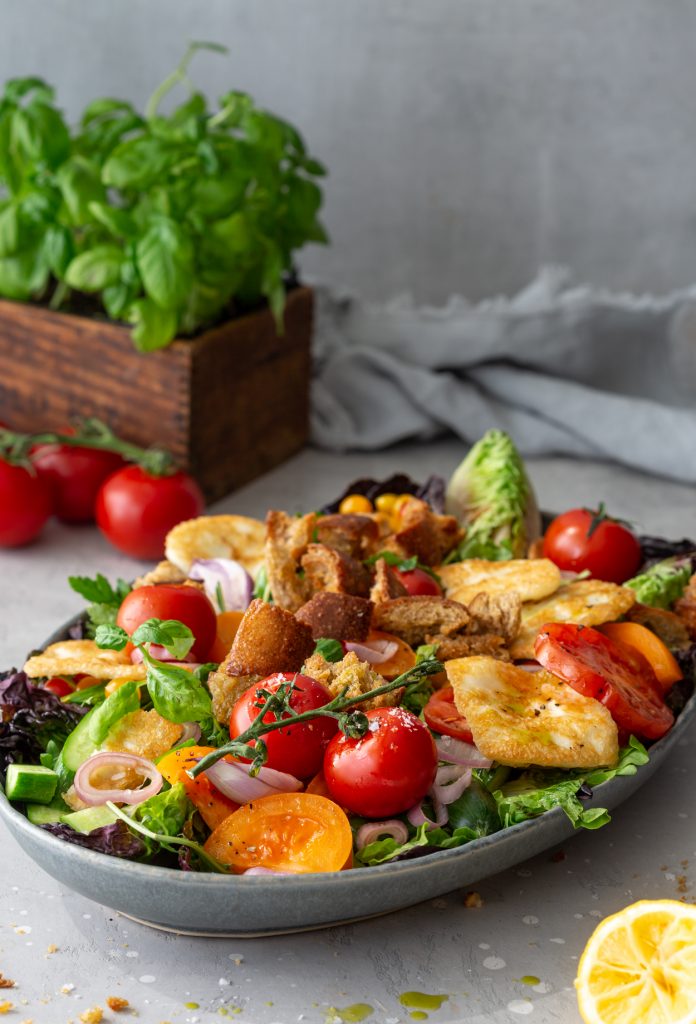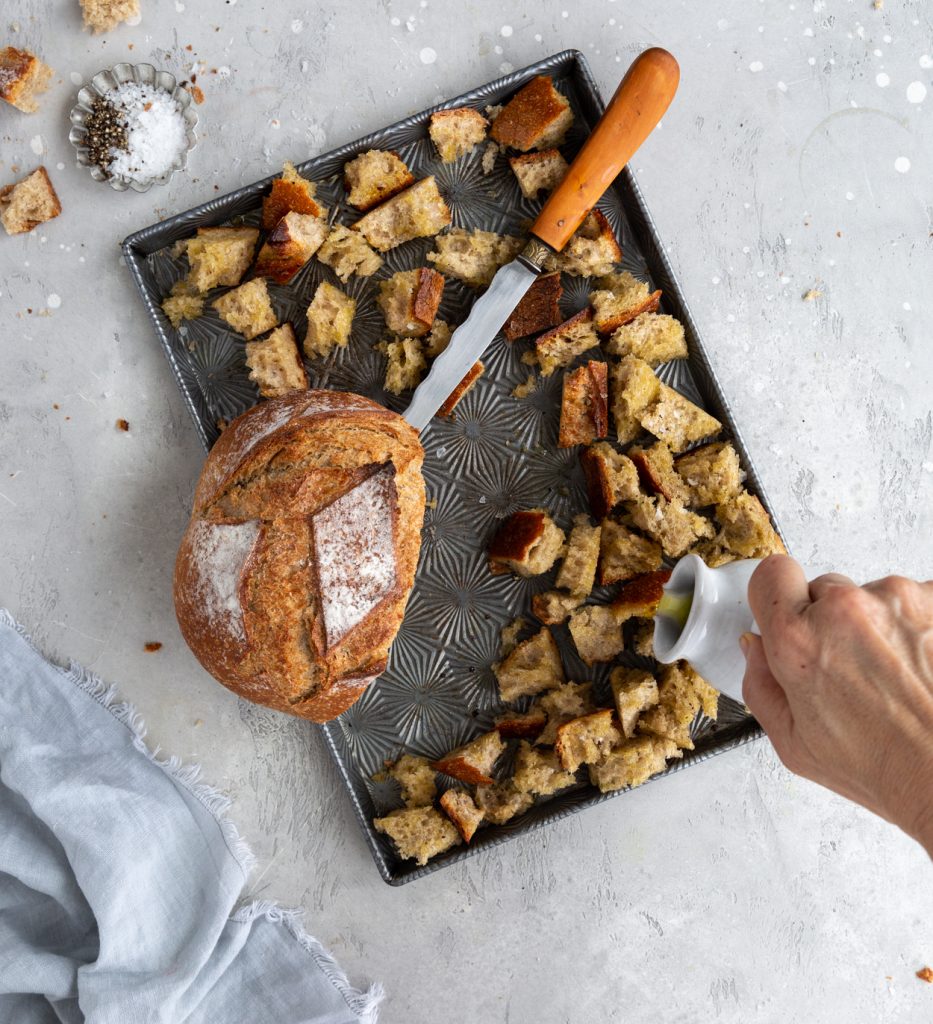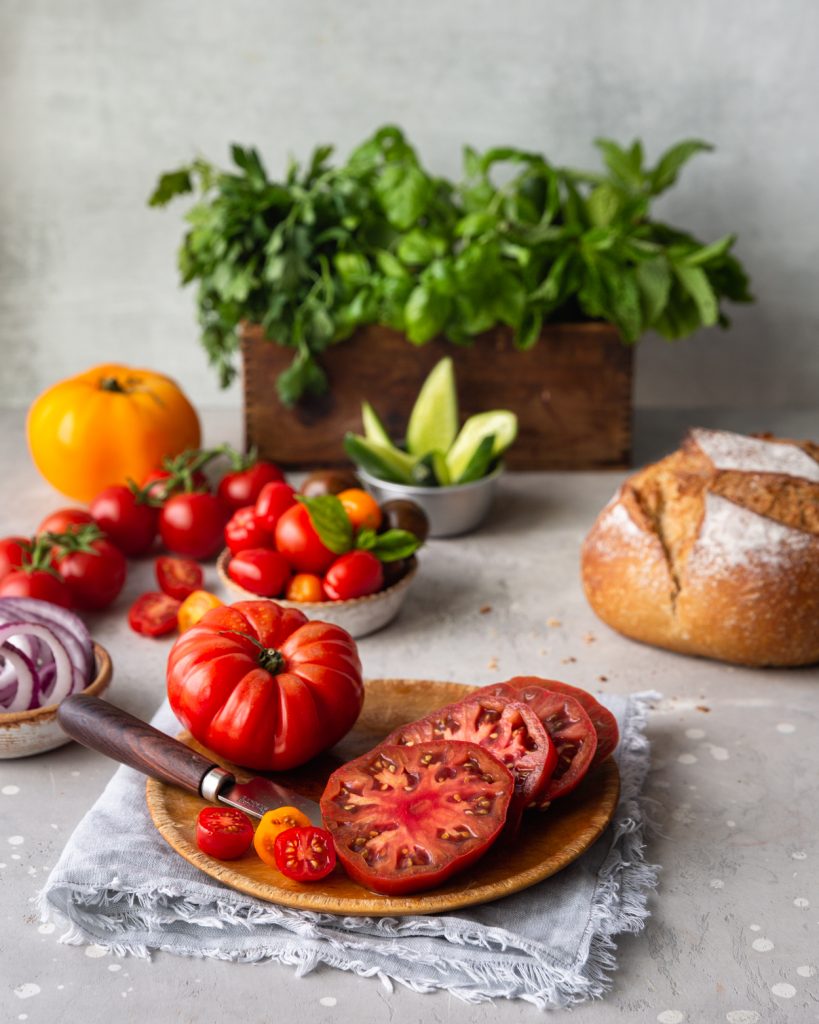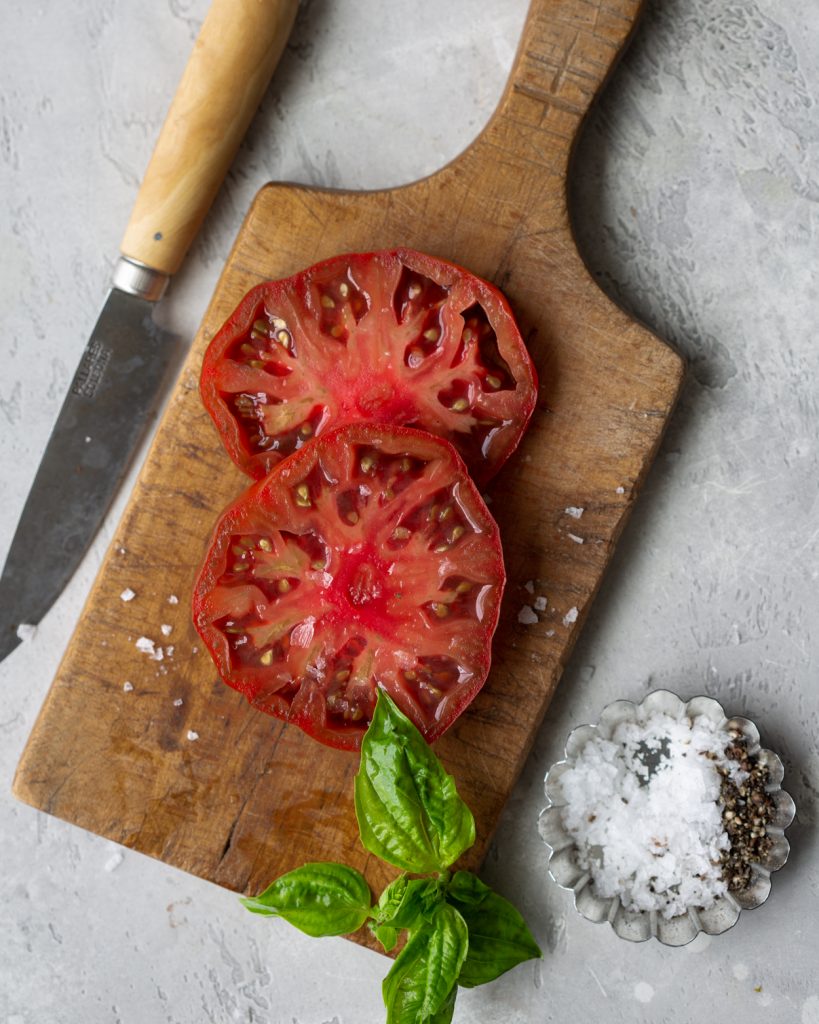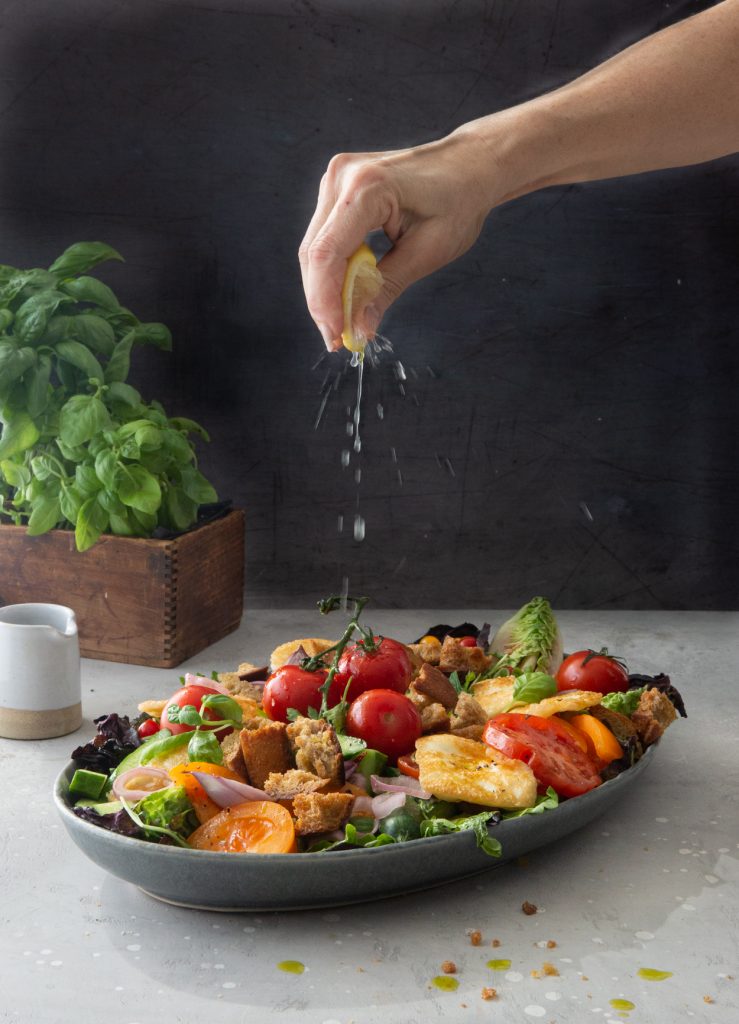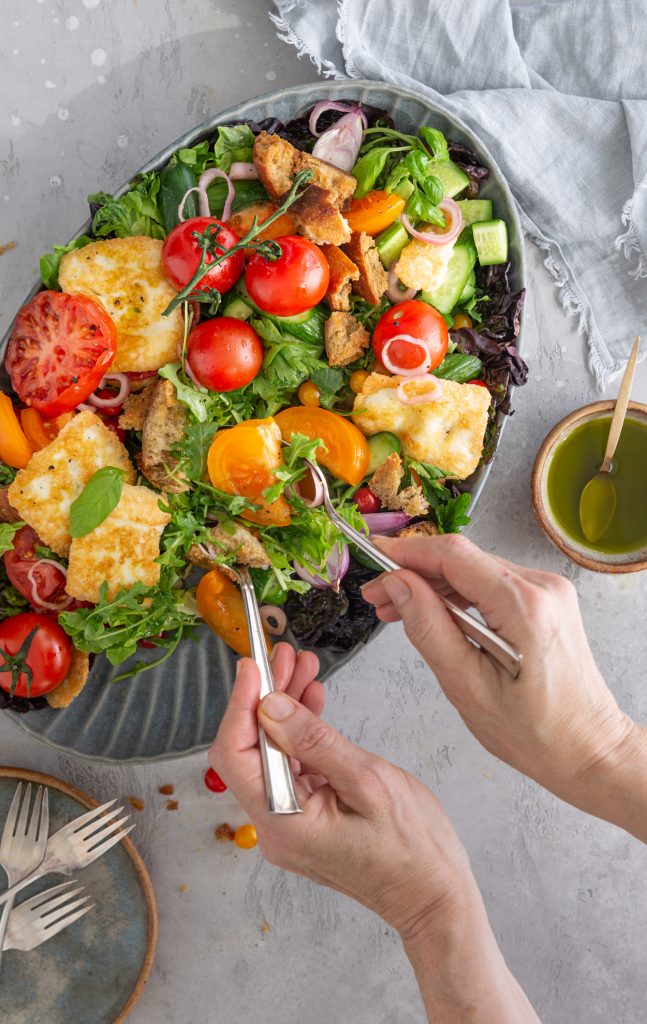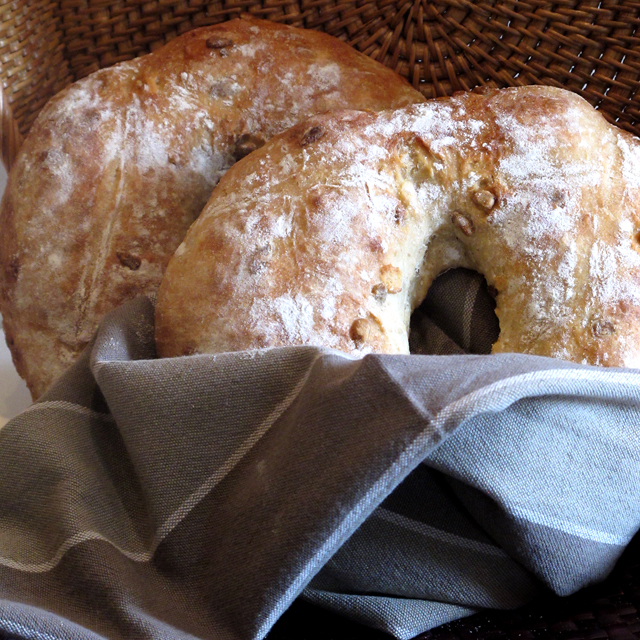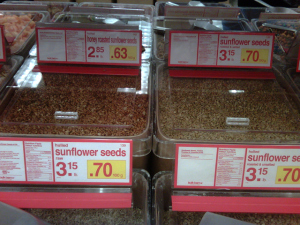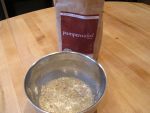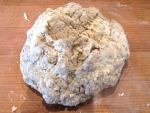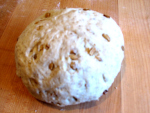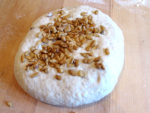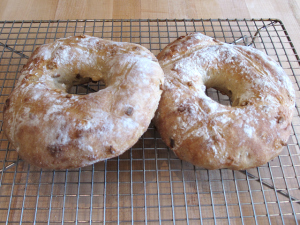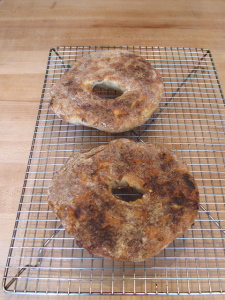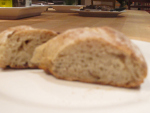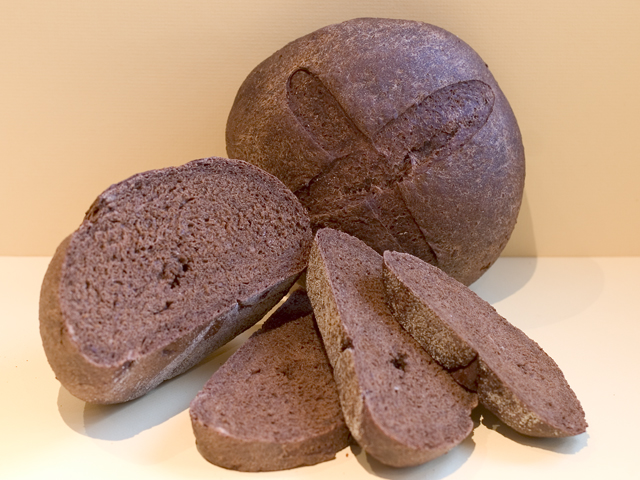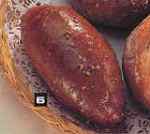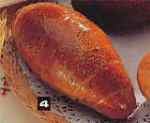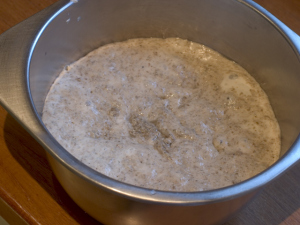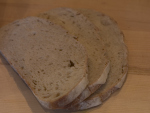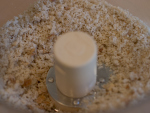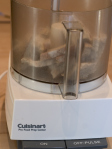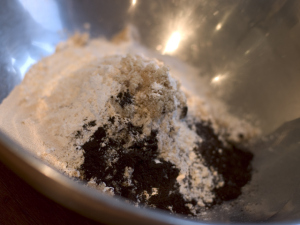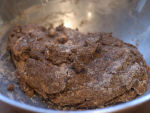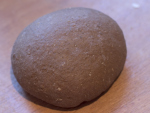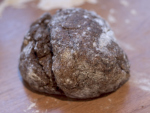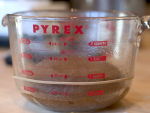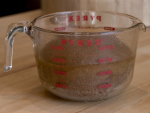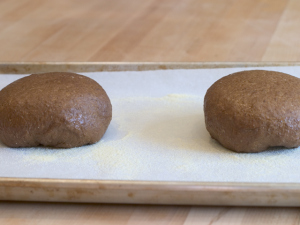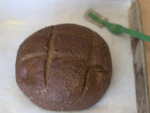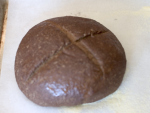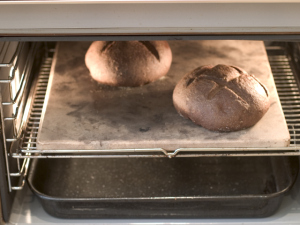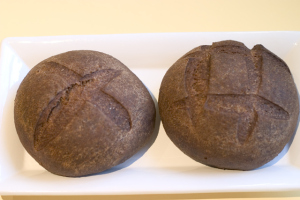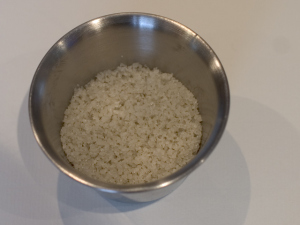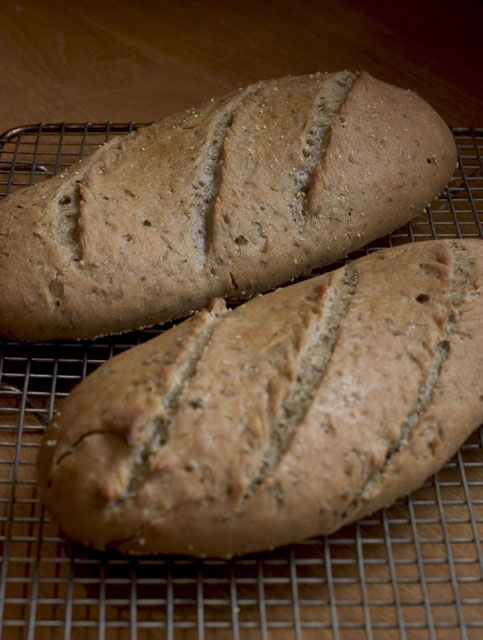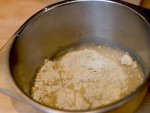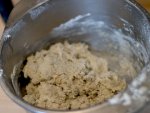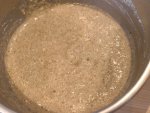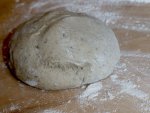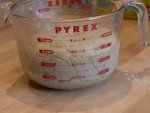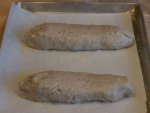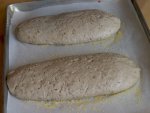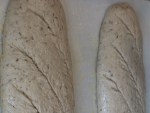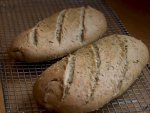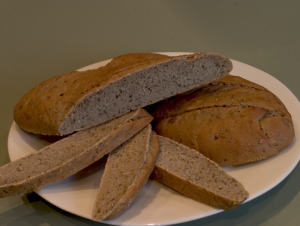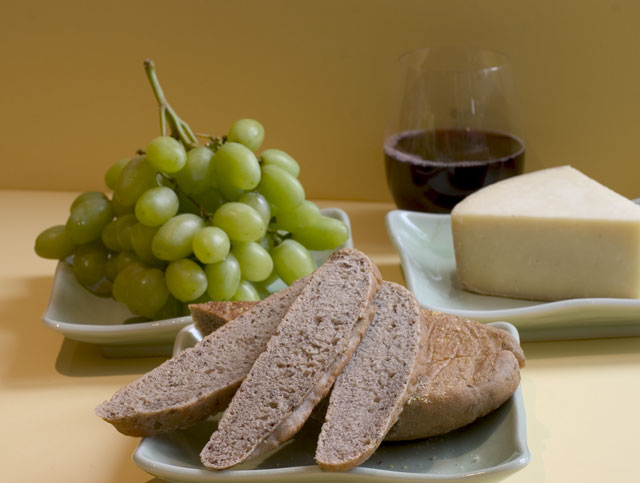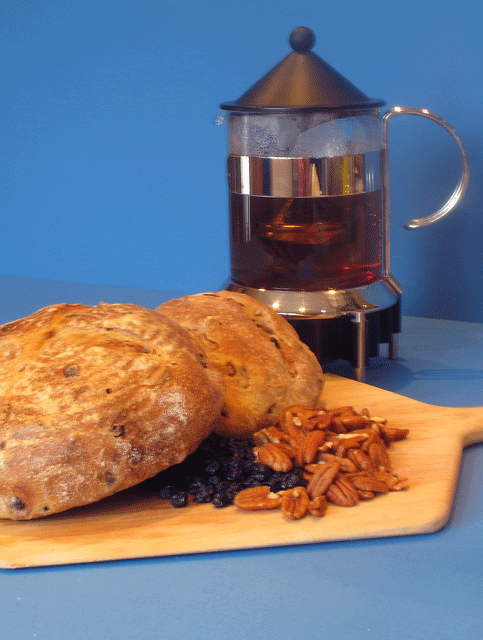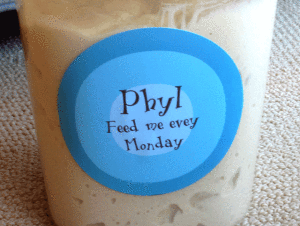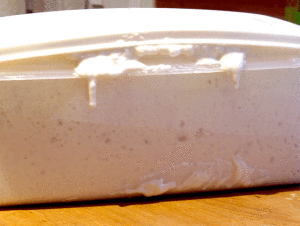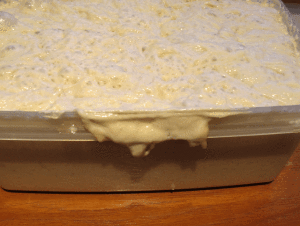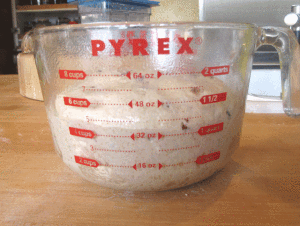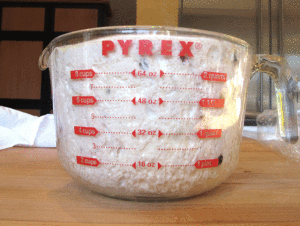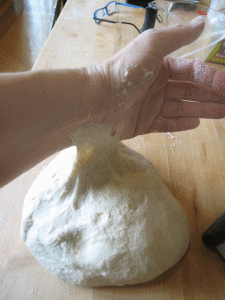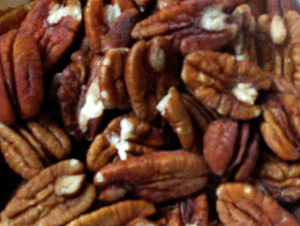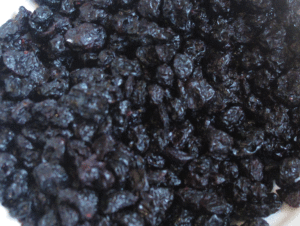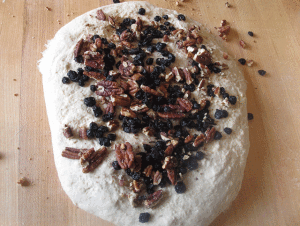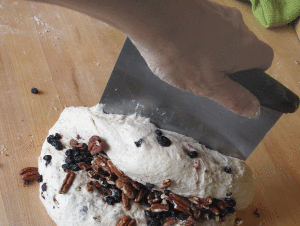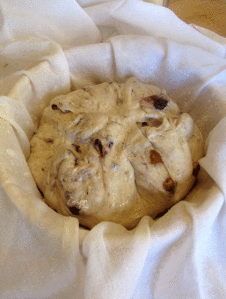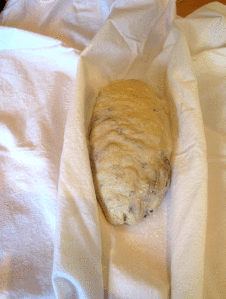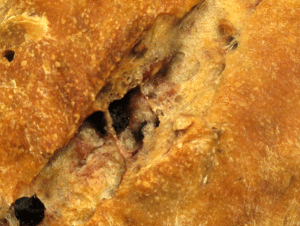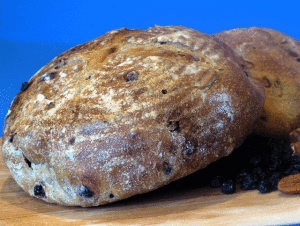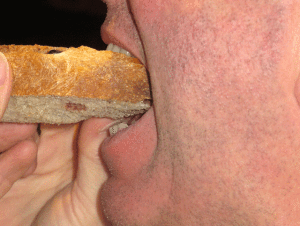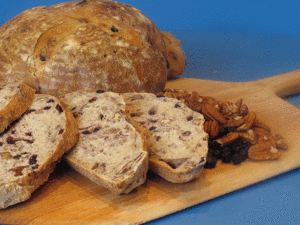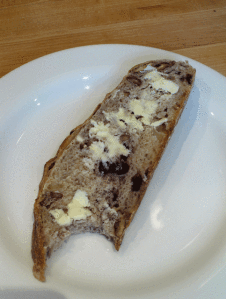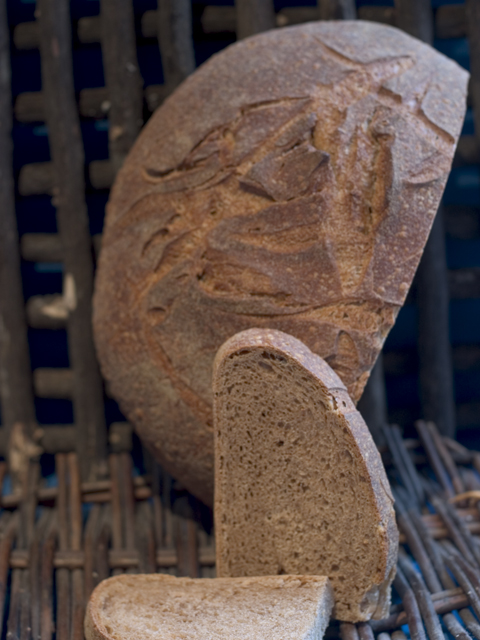 This week in the Bread Baker’s Apprentice Challenge we tackle Poilâine-Style Miche. When it comes to artisan bread, the name Poilâine is synonomous with excellence. Bread freaks from all over the world travel to Paris to purchase bread from the Poilâne family. Pierre Poilâne started a baking business in 1932 in Paris, creating bread using stone-ground flour, natural fermentation and a wood-fired oven. His son, Lionel took over the bakery in 1970, continuing the traditional methods. Sadly, Lionel died in a plane crash in 2001. His daughter, Apollonia now runs the business. Lionel’s brother, Max, branched out on his own and opened his own bakery. As in all families, there are squabbles about whose bread reigns supreme.
This week in the Bread Baker’s Apprentice Challenge we tackle Poilâine-Style Miche. When it comes to artisan bread, the name Poilâine is synonomous with excellence. Bread freaks from all over the world travel to Paris to purchase bread from the Poilâne family. Pierre Poilâne started a baking business in 1932 in Paris, creating bread using stone-ground flour, natural fermentation and a wood-fired oven. His son, Lionel took over the bakery in 1970, continuing the traditional methods. Sadly, Lionel died in a plane crash in 2001. His daughter, Apollonia now runs the business. Lionel’s brother, Max, branched out on his own and opened his own bakery. As in all families, there are squabbles about whose bread reigns supreme.
Poilâine’s most famous bread is a 2 kilogram (about 4.4 pounds) round country sourdough loaf, called Pain Poilâine. Lionel simply called it a miche. The bread is made from a sourdough starter, grey stone-ground flour (whole wheat flour with about 10-20% of the bran removed) , water and sea salt from Guérande. There are about 20 trained bread artisans baking at the family factory in Bievres, outside of Paris. Although the dough is now machine kneaded, all other aspects of creating the bread are done by hand in the time honored method established by Pierre Poilâne.
Peter Reinhart gives a wonderful detailed description, in his book, on how the bread is created. It is indeed a labour of love. The amazing thing about this bread is that is keeps for about a week, at room temperature. It is a dense and chewy bread and as Peter Reinhart says, “the flavours change in the mouth with each chew.” The Poilâne family says that the flavour peaks on day 3.
If you can’t get to Paris, they will ship you a loaf. I went to their web site , created an account for myself and put 1 loaf into my shopping basket. For 37.10 Euros ($52.30 Canadian Dollars) they will send me my very own loaf! I have not yet clicked on confirm order but I am thinking about it. If I do go through with it then I really will classify for “Bread Freak ” status. I’ll keep you posted.
So, onto my attempt at creating this magical miche. Day 1 we make the firm starter, mixing up some whole wheat flour, some of our sourdough starter and water. This gets refrigerated overnight.
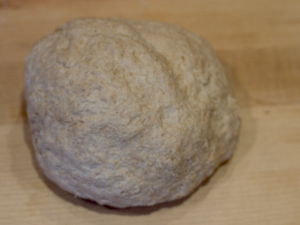
On Day 2, the final dough is made. In order to replicate the “grey flour” used at Poilane, Peter Reinhart suggests we put our whole wheat flour through a sieve to extract some of the bran.
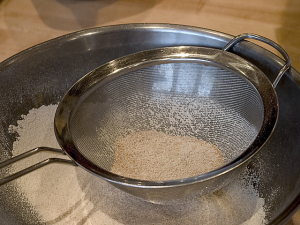
I was very excited to finally open up the jar of Grey Sea salt that has been sitting in my cupboard for over a year now. I’m not quite sure why I hadn’t used it yet, but here was the perfect opportunity.
The starter is mixed up with the sifted whole wheat flour, grey sea salt and more water. This is a big mass of dough, way too big for the Kitchenaid, so hand kneading was necessary. Here is the dough just after I began mixing.
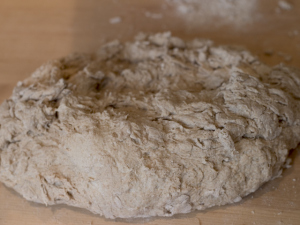
After about 15 minutes of hand kneading, I had a beautiful supple silky dough.
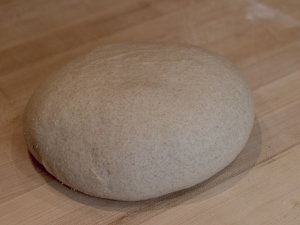
Once the dough is kneaded, it gets placed in an oiled bowl, covered with plastic wrap and ferments at room temperature until it doubles in volume, about 4 hours. At this point it is formed into a boule and placed into a linen towel lined bowl. So that the dough will not stick, the towel is sprayed with a bit of oil and then dusted with flour. The boule should be placed seam side up, then covered with the towel and refrigerated overnight.
As you can see from the photo below, I screwed up and placed the dough into the bowl, seam side down, so that the smooth side was on top. You might say, big deal, so what? The big deal is that the bottom of the dough (where the seam is) becomes the top of the loaf and then your seam turns into some unsightly cracks.
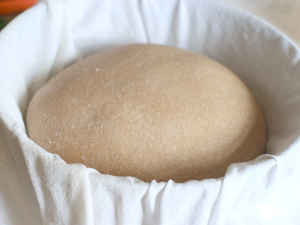
The next morning the dough is removed from the fridge and allowed to sit at room temperature for about 4 hours. Then the dough is gently turned out onto a baking peel, lined with cornmeal and is scored. At the Poilaine bakery they score it with the letter P in a gorgeous font. I wanted to score mine with S&S (for Salt and Serenity) but my fine motor skills are sorely lacking for artistry of that caliber! I decided to go with a square design with an X in the center. Unfortunately, I also had the cracks from the seam of the boule to contend with so it looks a bit strange artistic. But that’s the wonderful thing about Artisan bread – each loaf is hand made and no two are identical.
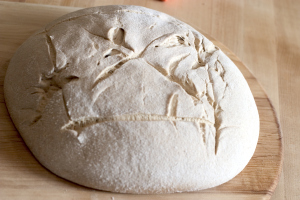
The bread goes onto a baking stone in a hot oven and is baked for about 45 minutes. Here is is my loaf on and below it the Poilâne loaf. I can’t tell the difference, can you? (Can you say denial?)
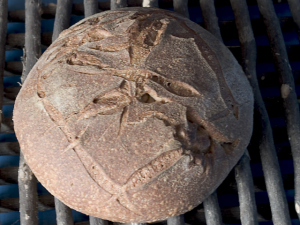
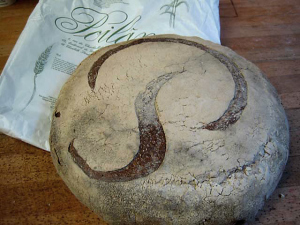
I sliced into the bread after about 2 hours. I thought the taste was good but a little “whole wheaty”. I closed my eyes to see if the taste changed with every chew, as Peter Reinhart promised, but I don’t think my palate is that highly developed. I did notice that I liked the bread a little better on day 2. It seemed a bit more mellow, and not as earthy. It lasted very well in a paper bag for almost 5 days and then we sliced what was left and froze it for toast.
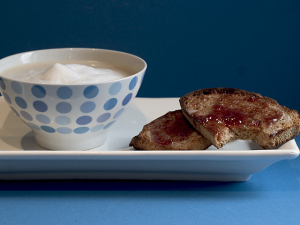
I will try this one again, next time using a recipe for Whole Grain Sourdough passed on to me by Sally of Bewitching Kitchen. It uses whole wheat flour only in the starter and a mixture of white bread flour, rye flour and spelt in the remainder of the dough. Sally promises that it is more like the real Poilâne.
